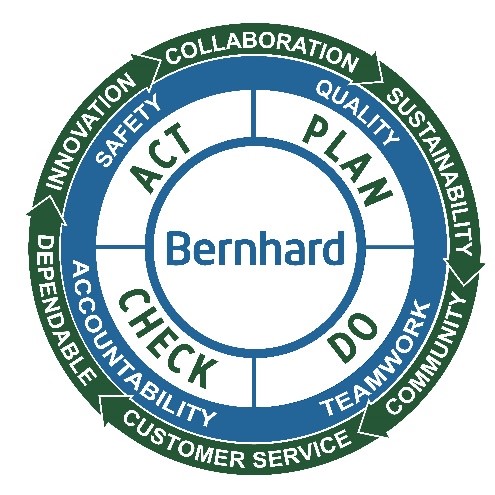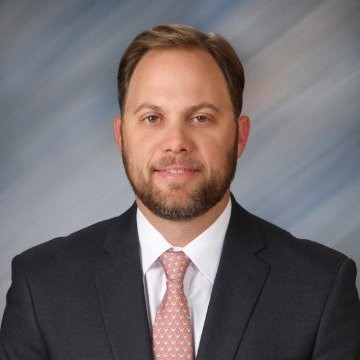Bernhard’s Project Portfolio Positioned for New Public-Private Partnerships
The Foundations of P3 in Arkansas
By Ryan Corrigan, Director of Business Development, Bernhard
________________
Throughout our history, public projects like the Brooklyn Bridge or the Tennessee Valley Authority have rewarded our nation’s faith in public investment and been points of pride for our republic. Similarly, American commercial enterprises have always been called upon to meet truly national aims, such as Bath Ironworks during World War II, or IBM and Douglas Aircraft throughout the moon race. Some assets truly are public in service and scope, but that doesn’t mean private enterprise isn’t best oriented to design and build, operate, even own these public goods.
Seeing this potential, in 2017, the State of Arkansas wrote and approved Act 813, the Partnership for Public Facilities and Infrastructure Act, that provides public-private partnerships, from design-build projects to energy savings or asset agreements to sale-leaseback (and lease-leaseback) arrangements. More recently, this spring, the state Department of Transformation and Shared Services published the final PPFIA rules. Qualifying project types include state-funded colleges and universities, libraries, hospitals, even ports and water supply systems, and many others.
Many of these facilities are facing a “perfect storm” of rising needs and declining resources. Higher education, for instance, is continually budgeting for upgrades and renovations to aging structures and infrastructure even as institutions project flattening or declining state and local tax revenue, and enrollment.
What is private enterprise if not the search for a competitive market solution to a need that’s unmet? At Bernhard, we’ve been assessing the ways public institutions can address deferred maintenance and construction projects in order to move forward, and we’ve outlined a few advantages to forging public-private partnerships.
Risk transfer
By transferring energy upgrades, maintenance and other costs to a private entity, through public-private partnerships, state agencies are also transferring risks. A massive advantage in these agreements is that the private entity assumes the risk from damage and performance of these energy systems, thus removing both liability and operational forecasts from institutions’ portfolios.
Any large employer is also a large maintainer of systems, from energy to parking, that are not mission-critical and, therefore, placed as a lower priority. By transferring risk associated with these assets to a private partner, universities, hospitals and agencies can redirect resources to further their core mission and create savings along the way.
Private-sector financing
Government bonds are a major investment instrument, but when it comes to financing construction projects, they’re cumbersome. One of the major advantages of P3s for building new, large public facilities is the ability of the private sector to finance them quickly and nimbly.
P3s can help fix costs for public institutions facing austere budgets and hard decisions. Historically, bids for capital projects left institutions with lingering questions and budget unknowns around operations and maintenance costs. In P3 arrangements, costs are known and fixed over the life of the contract.
At Bernhard, we have a team deft at finding financing solutions for large capital projects, many with 20-to-50-year ROI horizons, as well as dedicated project managers who’ve saved clients millions of dollars — a vital component in today’s environment.
Meeting the backlog of deferred maintenance
P3s are uniquely suited to address deferred maintenance issues. A private sector partner is keen to perform maintenance that sustains assets for their full-service life, and any P3 contract will stipulate appropriate service levels and performance standards for the duration.
While public agencies budget on an annual cycle that often pushes maintenance off, private companies plan to implement efficiencies early and often over the life of systems. Moreover, they’ll invest in costly upgrades if it means offsetting costs later in life.
Performance-based design, operation
Simply put, P3s allow public sector decision-makers to bid projects based not on upfront costs but best-in-class systems, projecting performance out over the life of an asset. That hasn’t been a driving factor in public construction projects. Traditionally, though contractors may offer a short warranty, afterward, the building’s “performance” was the responsibility of the owner. With a P3, the building’s “performance” is now a contractual obligation of the private partner.
For higher education institutions, projects can have an educational component, or support a trend that aligns with the mission of the institution. As an example, they can offer reimagined energy systems on university campuses by way of conservation (“green”) technology. Higher education institutions can realize financial benefits from an investment that also serves as an engineering showpiece for both the university community and visiting scholars or benefactors.
Public prosperity
Some opposed to public-private partnerships ask why public administrators and elected officials would give away public assets so that private companies may profit.
Firms such as Bernhard endeavor to create P3s largely to bring such projects to market. Deferred maintenance is bad for the administrators, faculty and students of a college or university because they cannot enjoy state-of-the-art systems and technology upgrades, but they’re also bad for engineers and builders who wish to embark on such projects.
Arkansas finished its legal framework at an opportune time. As states reopen, P3s can be a way to jumpstart economies. Forging new partnerships that break ground on projects will be an essential part of our return to normal.
To learn more about Arkansas’ new P3 regulations from experienced experts, register for our upcoming webinar.
________________
Ryan Corrigan, PE, CEM, CxA
Ryan is a Director of Business Development for Bernhard with 12 years of experience in the industry. He is a registered Professional Engineer, Certified Energy Manager and Certified Commissioning Authority. Ryan has expertise in the analysis and retrofit of existing facilities with an emphasis on energy infrastructure. He has worked with clients to increase system reliability on healthcare, higher education, industrial, local and municipal campuses.



